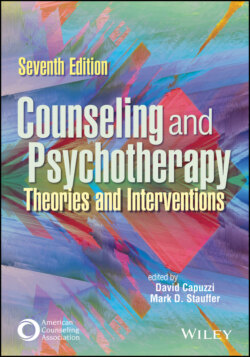Читать книгу Counseling and Psychotherapy - Группа авторов - Страница 147
Sidebar 3.2 Psychodynamic Theory and Neuroscience
ОглавлениеA strong trend in counseling is a growing interest in the relationship between personality disorders, attachment theory, and links to neuroscience. This relationship is being explored by using neuroimaging techniques to discern the difference between psychodynamics (or the motivational influences that are actively blocked from awareness) and etiology (or causes of pathological behaviors). Counselors may use this information to understand how different brain structures react with incredible precision to a variety of stimuli, whether they are cognitive, pharmacological, or emotional. For example, data acquired from neuroimaging techniques show that explicit memory is defined as conscious memory, whereas implicit memory is defined as unconscious. The hippocampus, which is responsible for coding memory, is directly affected by the amygdala, the emotion center of the brain. Thus, when a client experiences an emotional trauma, the perception of the trauma is coded into memory as conscious or unconscious content (Barry, 2014).
The degree to which structure and support are generally provided by the counselor depends on the functional level of the client. Experienced counselors who have incorporated psychodynamic techniques into their practice with clients with serious mental illness suggest taking the following steps during interventions (Lemma et al., 2011):
1 Identify an attachment-related problem with a specific relational-emotional focus that the client identifies as the cause for diagnostic symptoms.
2 Collaborate with the client to create a concrete conceptualization of interpersonal issues raised by the problem.
3 Attend to the structure of the dialogue between counselor and client and examine transference as a relational theme to generate alternative ways of thinking and feeling.
4 Attend to the therapeutic process and invite the client to evaluate the process of change as it is happening.
5 Provide the client with a written summary of the collaboratively created view of the client’s area of unconscious conflict. This serves as a tangible reference for the client in moments of relapse.
